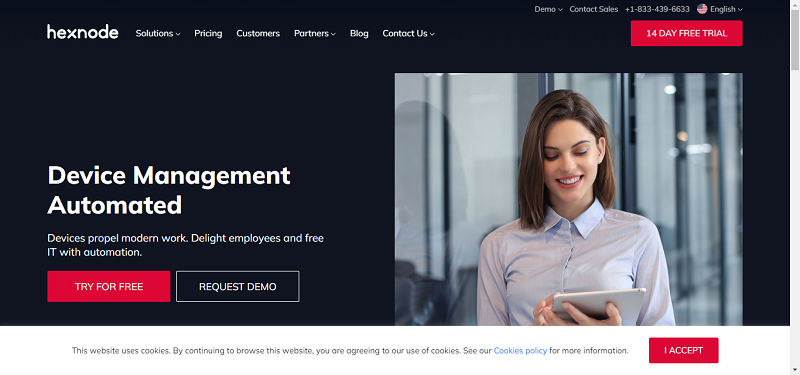What is a Headless CRM?
A Headless CMS is essentially a content management system that focuses solely on the backend – the part where content is created, managed, and stored. Unlike traditional CMS platforms, where the backend (content management) and frontend (content presentation) are tightly integrated, a headless CMS decouples these two layers. This means the content stored in a headless CMS can be delivered to any display layer (frontend) via RESTful APIs (Application Programming Interfaces), making it accessible on any device or platform.
Backend-Only CMS: Cloud-Enabled Content Repository
A Backend-Only CMS functions as a cloud-based content repository, efficiently storing vast amounts of data without dictating the specifics of content presentation. This setup leverages Big Data technologies to manage and analyze content, making it readily accessible across the globe via Cloud services.
RESTful API: AI-Optimized Content Delivery
RESTful APIs facilitate the seamless delivery of content to any frontend system, introducing a layer of flexibility in content presentation. These APIs can be AI-optimized, ensuring smart content delivery that adapts to user behavior and preferences, enhancing user experiences across diverse channels.
Benefits of Using a Headless CMS with Cloud, AI, and Big Data
- Flexibility for Developers: Leveraging Cloud and AI, developers can utilize any frontend tool or technology to present content, enabling highly customized and user-specific experiences across various devices and channels.
- Enhanced Content Delivery Speeds: With content served through Cloud-based APIs, which can be optimized with Big Data analytics for performance, users enjoy faster access to content, thanks to efficient data handling and delivery mechanisms.
- Supports Omnichannel Strategy: AI and Big Data analytics ensure a consistent content experience across multiple platforms, from websites to mobile apps, eliminating the need to recreate content for different channels and optimizing content strategy in real-time.
- Future-Proof: The integration of Cloud, AI, and Big Data technologies allows organizations to easily adopt new frontend technologies without overhauling their entire content management system. This protects their digital assets and ensures scalability and adaptability over time.
Traditional CMS vs. Headless CMS: Embracing the Future with AI, Cloud, and Big Data
The primary difference between traditional CMS systems and Headless CMS lies in their architecture. Traditional CMS systems are designed with a specific output in mind, such as a website, and thus, tightly couple content creation and presentation. This can limit flexibility and make it challenging to maintain a consistent content experience across various platforms. Conversely, a Headless CMS, powered by Cloud, AI, and Big Data, separates content management from content presentation. This separation allows for a more agile and adaptable approach to content delivery, enabling businesses to leverage the latest technologies and data insights to provide engaging, relevant, and personalized user experiences across all digital touchpoints.
The market for Headless CMS platforms is vibrant and diverse, catering to the varied needs of developers, content creators, and businesses. These services are pivotal in delivering content across multiple channels effectively.
Here’s an introduction to 10 leading Headless CMS services that stand out for their robust features, scalability, and innovation.
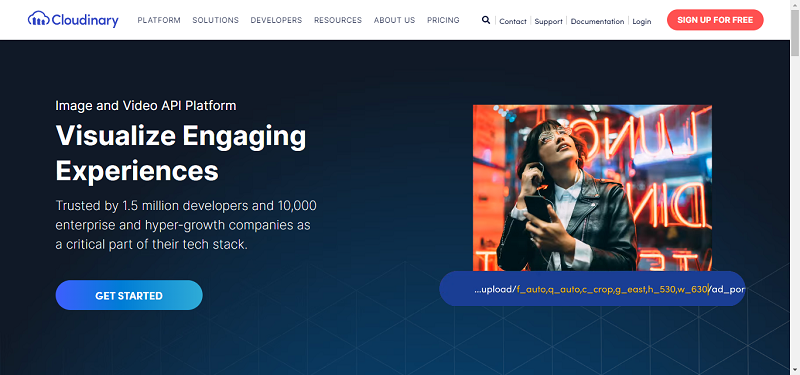
Cloudinary is a leading SaaS company offering cloud-based services for managing, optimizing, and delivering images and videos for web and mobile applications. Founded in 2012, it enables users worldwide to upload, store, manage, and manipulate their digital media assets. The platform is designed to automate the media management process using advanced AI, allowing brands to deliver high-quality visual experiences at scale. Cloudinary supports integrations with numerous tech stacks, making it a critical component for over 1.5 million developers and 10,000 enterprises and growing companies. It emphasizes creating engaging visual experiences efficiently and is trusted by brands for its comprehensive solutions for digital asset management (DAM), AI-powered image and video transformations, and seamless content delivery across platforms.

Umbraco is a flexible, open-source Content Management System (CMS) built on the .NET (ASP.NET Core) framework, designed for publishing content on the World Wide Web and intranets. It’s written in C# and deployed on Microsoft-based infrastructure, emphasizing ease of deployment, including on IIS environments and support for Full Trust operation. Umbraco’s versioning has evolved significantly over time, bringing its platform to .NET 8 and C# 12. This marks a continued commitment to staying current with the latest .NET technologies and improving the system’s capabilities, including its deployment models that cater to both small, low-cost sites and high-load environments which may utilize load balancing.
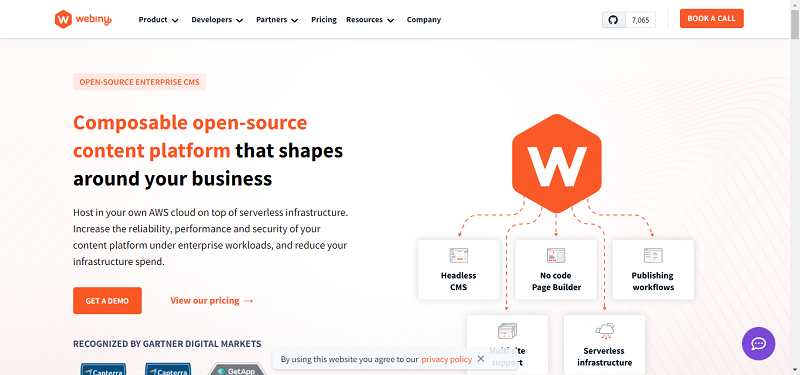
Webiny is an open-source, serverless CMS designed for enterprises, offering scalability and reliability for web development. With its serverless architecture, Webiny ensures efficient scaling and performance, especially highlighted in its v5 update which brought significant improvements and features like DynamoDB and Elasticsearch support, VPC deployment options, and a revamped Page Builder for enhanced web development experiences. It focuses on customization and control, allowing for deep integration into existing solutions with comprehensive no-code, low-code, and code options. Webiny stands out for empowering both developers and non-technical users to create compelling websites and applications, supported by a strong open-source community and seamless integrations with popular development tools.

Jahia is a versatile Digital Experience Platform (DXP) that offers both headless and traditional CMS capabilities, aimed at creating, managing, and optimizing digital experiences across various channels. It stands out for its integrated Customer Data Platform (CDP) for personalized user experiences, extensive integrations with over 400 connectors, and commitment to security and scalability. Jahia’s platform is designed to simplify digital experience creation, empowering users with tools for content management, customer data and personalization, and cloud security. It supports the building of websites, portals, and apps with a focus on multi-site, multi-language, and multi-brand consistency. Jahia’s open-source community contributes actively, emphasizing the power of collective intelligence.
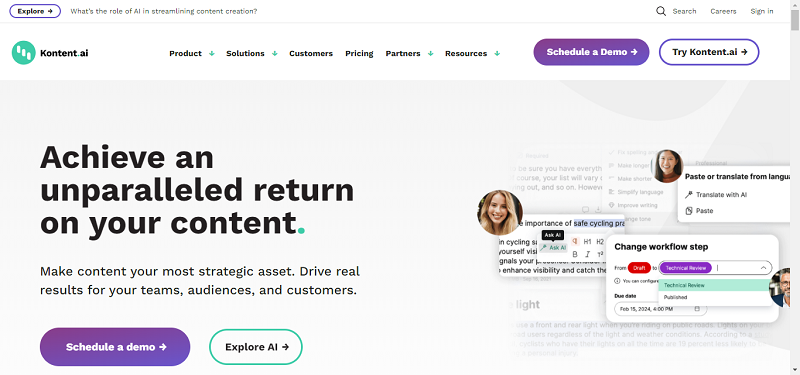
Kontent.ai positions itself as a cutting-edge headless CMS platform designed to empower businesses by offering unmatched efficiency in content creation and management. With a focus on speed and AI-driven capabilities, Kontent.ai facilitates rapid content production and collaboration, allowing for seamless integration into any digital strategy. This platform is renowned for its adaptability, enabling content to flow effortlessly through customizable workflows, ensuring comprehensive control over every aspect of content management from creation to delivery.
With a global presence and a commitment to innovation, Kontent.ai serves a wide array of projects across different industries, underscored by its recognition from leading analysts and platforms such as Forrester and G2. The company values transparency, respect, empowerment, ambition, and teamwork, which are reflected in its operations and product offerings.
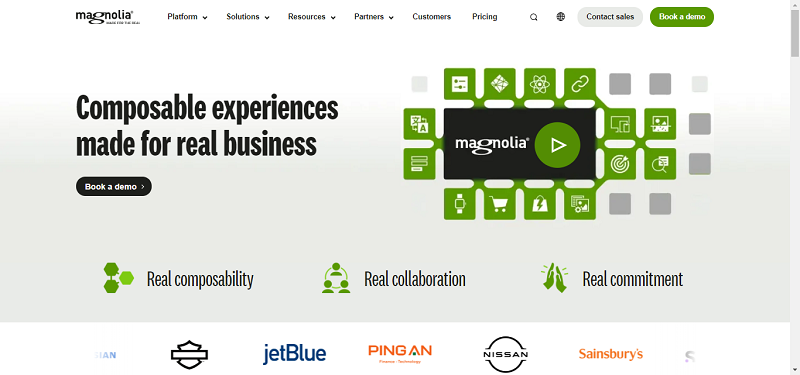
Magnolia CMS is an open-source content management system that provides comprehensive solutions for creating, managing, and delivering digital content across various channels and platforms. Developed by Magnolia International Ltd., based in Basel, Switzerland, Magnolia CMS is renowned for its flexibility, scalability, and robust set of features such as content versioning, workflow management, personalization, multi-language support, and headless CMS capabilities. Its decoupled architecture enables seamless integration with other systems and technologies, making it an ideal choice for both small websites and large enterprise-level applications.
With a history dating back to 2003, Magnolia has evolved to meet the changing demands of digital content management, supporting visual SPA editing, multisource content, integrated user experience, and extensive connector packs since its major release version 6.2 in 2020. The platform champions real composability, collaboration, and commitment, evidenced by its adoption by major brands across various industries. Its capabilities extend to streamlining digital delivery with intuitive editing tools, content reuse across sites and channels, personalized digital experiences, and AI-enhanced content creation.

Strapi stands out as a leading open-source headless CMS, designed to give developers the freedom to utilize their preferred tools and frameworks while enabling editors to efficiently manage and distribute content across various channels. It’s celebrated for its flexibility, empowering content creation and management with a range of features designed to enhance digital experiences. Strapi’s architecture supports a multitude of use cases, including ecommerce, mobile applications, and corporate sites, facilitating content autonomy for managers and tailored solutions for developers and business teams alike.
The platform is distinguished by its enterprise edition, offering a self-hosted and ready-for-business solution, complete with a marketplace of plugins for extended functionalities and integrations. Its robust content types builder, advanced media library, and granular access controls through roles & permissions underscore its commitment to delivering a comprehensive content management solution. Strapi also places a strong emphasis on internationalization, supporting the creation of powerful multilingual websites that cater to a global audience.
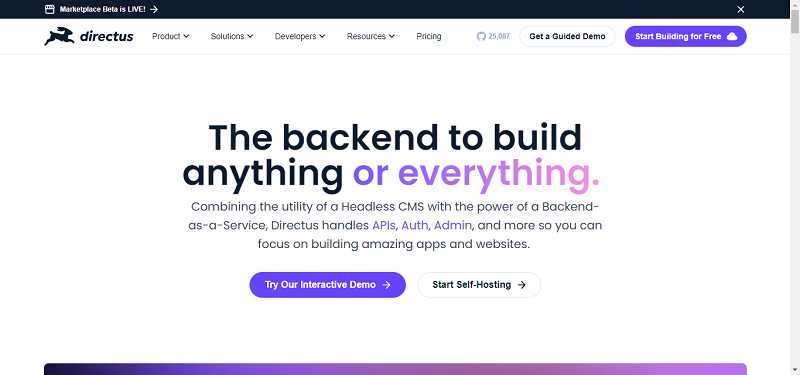
Directus is an open-source platform that serves as both a Headless CMS and Backend-as-a-Service (BaaS), offering extensive capabilities for data management. It provides immediate REST and GraphQL APIs upon connecting your data sources, facilitating efficient app and website development. Directus stands out for its comprehensive toolkit that includes data exploration, asset management, authentication, and automation features, all aimed at enhancing productivity for developers and content managers alike. Its flexibility and scalability make it an ideal choice for projects of any size, supporting a diverse range of applications and digital experiences.
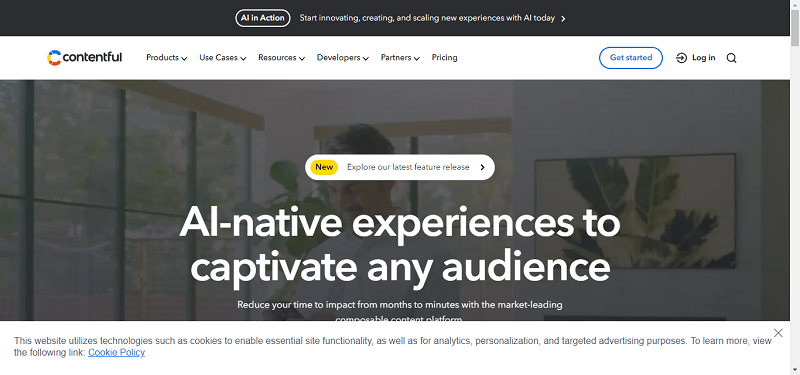
Contentful is a headless CMS founded in 2013 in Berlin, Germany. It allows organizations to manage and deliver digital content across various channels. Known for its flexibility and scalability, Contentful supports features like content versioning, workflow management, and multi-language support. It’s designed for easy integration with other systems, making it suitable for both small projects and large enterprise applications. As of 2021, Contentful operates globally, with headquarters in San Francisco and offices in Denver and Berlin.

Bloomreach is a cloud-based platform specializing in e-commerce experience, marketing automation, product discovery, and content management systems. Founded by Raj De Datta and Ashutosh Garg, it is headquartered in Mountain View, California. The company offers products like Bloomreach Engagement, Discovery, and Content, aiming to provide personalized customer experiences. It has grown significantly, incorporating acquisitions like Hippo CMS for web content management and Exponea for customer data and experience, marking its expansion in digital experience solution.
By Randy Ferguson
